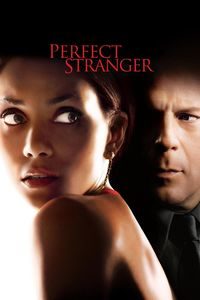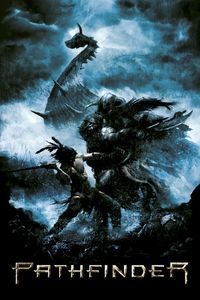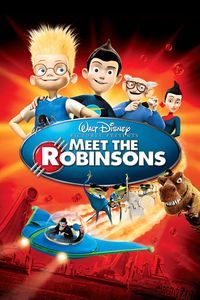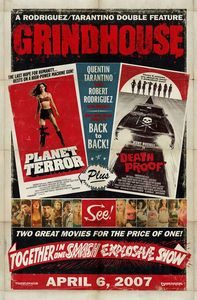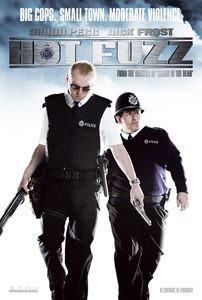Persepolis, Marjane Satrapi
Pantheon, 2003 (2007 translation), 352 pages, C$29.95 tpb, ISBN 0-375-71483-9
Ask around for graphical novels recommendations, and everyone will mention at least one title: Art Spiegelman’s Maus, which used comics as a way to tell the story of a Holocaust survivor. The subject matter made it respectable for audiences far more diverse than just “the comic fans”, the meta-complexity of Spiegelman’s narrative ensured that it would remain a hit with the intelligentsia, and the accessibility of the tale made it a perennial favourite in bookstores. Don’t expect it to go out of print soon.
Marjane Satrapi’s Persepolis has a number of superficial common points with Maus: Both are true stories in graphic novel form, both became breakout books with mainstream audience, both have something to say about totalitarian regimes, both use an iconic black-and-white approach to their visual presentation. But Persepolis also shares with Spiegelman’s masterpiece a deeper connection: Both use biographical comics as a way to show that history is something that happens to people.
Persepolis starts in Tehran at the end of the seventies. Marjane Satrapi is a ten-year-old girl, coping with the aftermath of the Iranian revolution. Through a series of short chapters, we come to learn about her family, her school, the circumstances surrounding the revolution and the immediate impact of it. During the second half of this first volume, as the story enters the eighties, we get to see the effect of the Iran/Iraq war on Tehran and Marjane’s life.
The Marjane in the first volume of Persepolis 1 is an irresistibly cute girl with a smart mouth and privileged circumstances. Distantly related to old Persian royalty, her immediate family is relatively well-off and is able to avoid the worst of either the revolution or the war. But not everyone survives, and the events reach everyone. During this first volume, Marjane is a victim of circumstances: The anecdotes that she relays are more powerful than even the most complete histories of Iran in making us feel why and how the revolution occurred.
Things are different in Persepolis 2: Sent to Europe to get a better education, 15-year-old Marjane has a hard time growing up alone and away from her family. Still smarter than most of her acquaintances, Marjane soon fall into a bad crowd, tries her hand at drug-dealing, quits school, is kicked out of her residence and touches bottom soon afterwards, living homeless for three months. Pushed beyond her limits, she returns to Iran, where she gets to re-experience the religious regime.
Persepolis 2 isn’t as cute as the first tome, but it’s more affecting: Marjane is now the person most responsible for what happens to her, and the smart little girl has turned into a self-destructive teen trying to find her place. As a young adult, her talents are still challenged by the society in which she lives. After a brief spell in which she thinks she can get along in Iran, she comes to realize that she will never belong, in Iran or anywhere. The entire series ends in 1994 as she leaves for France, where she still lives today.
It’s the story of a life, but it’s really in the telling that Persepolis comes alive. A crafty writer, Satrapi navigates a tone between innocence, confession and veiled outrage: By showing rather than proselytizing, she’s able to capture the essence of what life must have felt in Iran. She shows, by example, the inanity of a regime that considers its population to be childish and untrustworthy. She re-tells events such as the Iran/Iraq war and the Gulf War from an Iranian perspective, giving an extra dimension to history that Western audiences don’t know very well.
It’s all tremendously affecting, and carries with it the impact of an excellent narrative. The storytelling is top-notch, and even the deceptively minimal art is effective: Characters are immediately recognizable from a few iconic details, and the abstraction of the art enhances its universality. Best of all, though, is the way Persepolis is able to make us feel what it was like to be an young Iranian girl during the revolution, a pre-teen during the war, a teenager exiled in Europe, and a young woman back under the veil. It’s the kind of story to make us realize that beyond textbooks and newspaper headlines, history has victims. Persepolis is earns a place next to Maus on the “graphical novel classics” shelf, and it’s easy to see why. Don’t miss it.
(Some will be surprised to learn that I read Persepolis in English when the original version was published in French. The explanation is purely pragmatic: The relatively scarce four-volume series of trade paperbacks in French would have cost me around $130, whereas the two widely available hardcovers in English set me back “only” $45. Feel free to quote me the next time you contemplate the role of market economics in cultural assimilation.)
